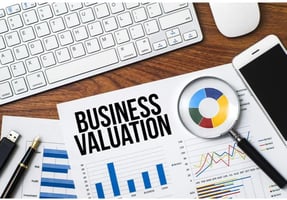So, you've built a successful business from scratch and now it's time to move on to new ventures....
Unveiling the Mystery Behind SDE: The Key to a Successful Business Exit
Hey there, fellow entrepreneurs! Are you thinking about selling your business? If so, you might have come across the term "Sellers Discretionary Earnings" (SDE) during your research. Don't worry, we've got you covered. Today, we'll dive into SDE and uncover its significance in achieving a successful business exit. So, sit back, grab your favorite beverage, and let's unravel this mystery together!

Understanding Sellers Discretionary Earnings (SDE):
Before we get into the formula, let's break down what Sellers Discretionary Earnings actually means. In a nutshell, SDE represents the dollars generated by a business that directly benefit its owner or operator. These earnings go beyond the basic net profit and capture all the financial perks an owner enjoys, such as salary, perks (company car, vacations), health insurance and retirement contributions.
Why is SDE Essential for a Successful Business Exit?
1. Accurate Valuation: Potential buyers, investors, and business brokers often use SDE as a key metric to determine the true value of a business. It provides a more comprehensive picture of the actual profitability of your business, considering the benefits that you, as the owner, enjoy.
2. Attractive to Buyers: When you present a clear and well-documented SDE, it offers potential buyers a clear understanding of the business's earning potential. This, in turn, makes your business more attractive and can even increase the selling price.
3. Negotiation Power: SDE can give you an edge during negotiations. By showcasing the full value of the business, you can justify a higher asking price. After all, it's not just about the physical assets or revenue; it's about the additional value you bring to the table.
Calculating SDE:
While SDE may sound complex, calculating it is not. Here's a simplified way to calculate SDE:
1. Start with the net profit of your business.
2. Add back any non-recurring expenses (one-time costs or legal fees) and personal expenses (salary, perks) that were deducted from the profit.
3. Deduct any expenses that will no longer be incurred once the business is sold (owner-specific expenses).
By following this straightforward calculation method, you can arrive at an accurate SDE figure for your business.
Final Thoughts:
As you embark on the journey of selling your business, understanding Sellers Discretionary Earnings is key to a successful and lucrative exit. By accurately calculating and presenting your SDE, you can attract qualified buyers, negotiate a better price, and pave the way for a smoother transition.
Remember, SDE is just one piece of the puzzle, but it's an essential one. So, take the time to dig into the details, document your financials diligently, and present your business in the best light possible.
We hope this blog post has shed some light on the concept of SDE and its importance for your business exit. Until next time, happy selling!



